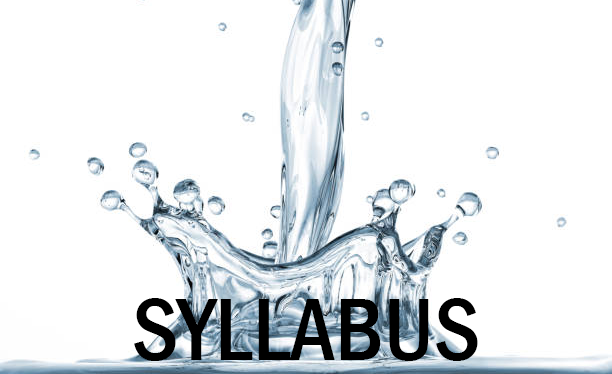By Lisa Paciulli (Department of Biological Sciences), Mary Estrada (Department of Foreign Languages and Literatures), and Maria Gallardo-Williams (Office for Faculty Excellence)

The idea of a Liquid Syllabus is not new, but the name might be new to you, so let’s start at the very beginning.
What is a Liquid Syllabus?
A Liquid Syllabus is a living document that can be shared with students before the start of a course in order to let students know that you are their course instructor and that you will support them. A liquid syllabus can take the form of a website, a blog post, a video, a document, and/or even a collection of slides that can be shared with your students before the first day of class. Ideally, a liquid syllabus should be public and mobile-friendly since that will make it more accessible to the most students in the course.
What does a Liquid Syllabus include?
Most faculty who use a Liquid Syllabus include some basic information including a brief, casual welcome video from the instructor. This is where the instructor puts a face and personality to the course, and when students can first become familiar and comfortable with you. A Liquid Syllabus also gives students a clear list of expectations for the course, but instead of doing this in a perfunctory, robotic, and/or cold language and manner, you use gentler, kinder, and welcoming language. To further humanize the course and the instructor, the course expectations may be in the form of a contract or pact, clarifying expectations for both the instructor and student. One example would be delivering a message as follows, “What you can expect from me: I will treat you with dignity and respect, and be flexible to support your individual needs. What I will expect of you: You will treat me and your peers with dignity and respect, too” (Pacansky-Brock, 2020).
How could a Liquid Syllabus benefit your students and you?
A Liquid Syllabus is a great way to set the tone of a course, and to humanize the instructor in the eyes of the students. It shows students that you are interested in them and their well-being. A Liquid Syllabus shows your students that you have taken the time to think about and welcome them to the class ahead of the course start time. It sends the cue to your students that you care about them and will be a partner in their learning. To alleviate anxiety about additional expectations in the course, a Liquid Syllabus can also include some immediate due dates, such as what assignments will be due the first week of classes. In addition to a Liquid Syllabus that introduces instructors and the basics of a course to their students, and welcomes students to a course, most faculty also still have a full, traditional written syllabus with all of the required content, due dates, etc. The complete syllabus can be posted to the course learning management system (LMS) or the course website, and can be archived by the instructor’s department.
Another potential benefit of a Liquid Syllabus is that it may also help faculty feel a sense of relief and organization as they prepare for the start of the semester. Some of us have also found that communicating with students a week before the semester starts can cut down on the typical beginning-of-the-semester onslaught of emails from students asking questions that have already been answered in the full course syllabus, on Moodle, in class, etc. This welcomed decrease in faculty emails may be due to students having time to view, read, listen to, and/or process the information in the Liquid Syllabus before the semester begins when they get bombarded with information overload. The decrease in emails may also indicate that students are feeling more comfortable and confident, and less anxious and apprehensive about the course and/or you, the instructor. So, do yourself and your students a favor by going with the flow, and creating a Liquid Syllabus and sharing it with your students a week or so before the first day of class!
Here is a free resource that can help you create your own Liquid Syllabus: Let’s Create a Liquid Syllabus
What does a Liquid Syllabus look like?
- An example from an English Composition course
- Here is one for a Biology course
- And one for a Photography course
- Here is one for an NC State Linguistics course